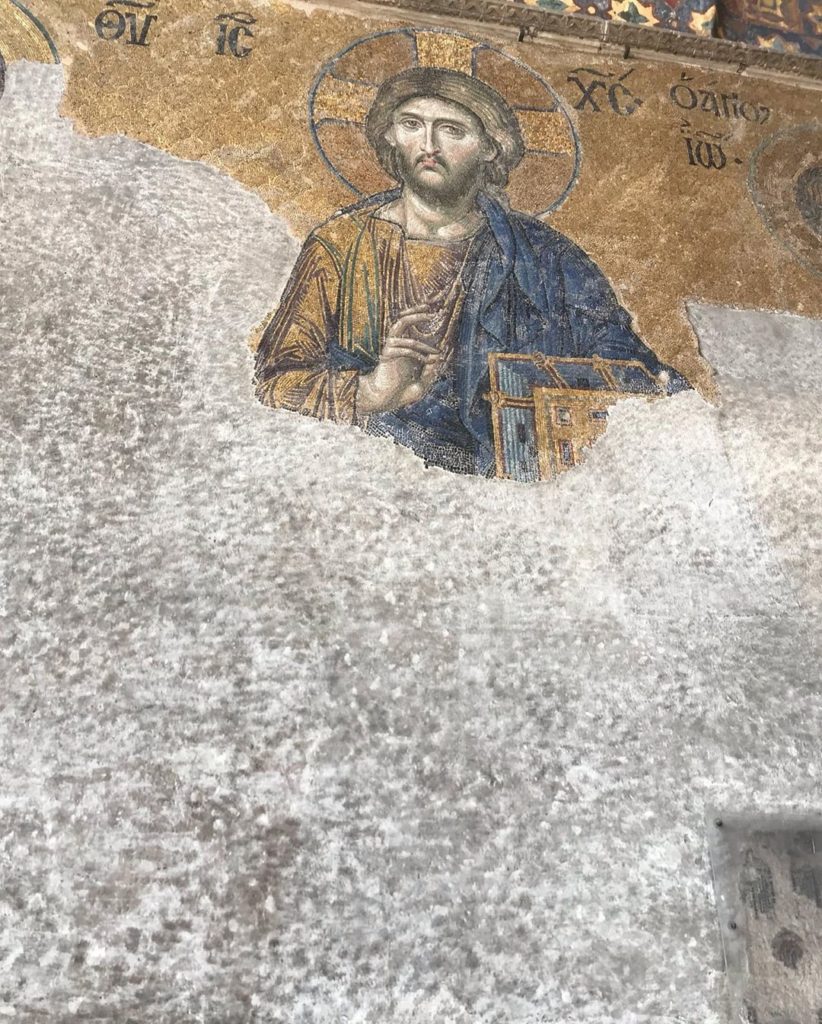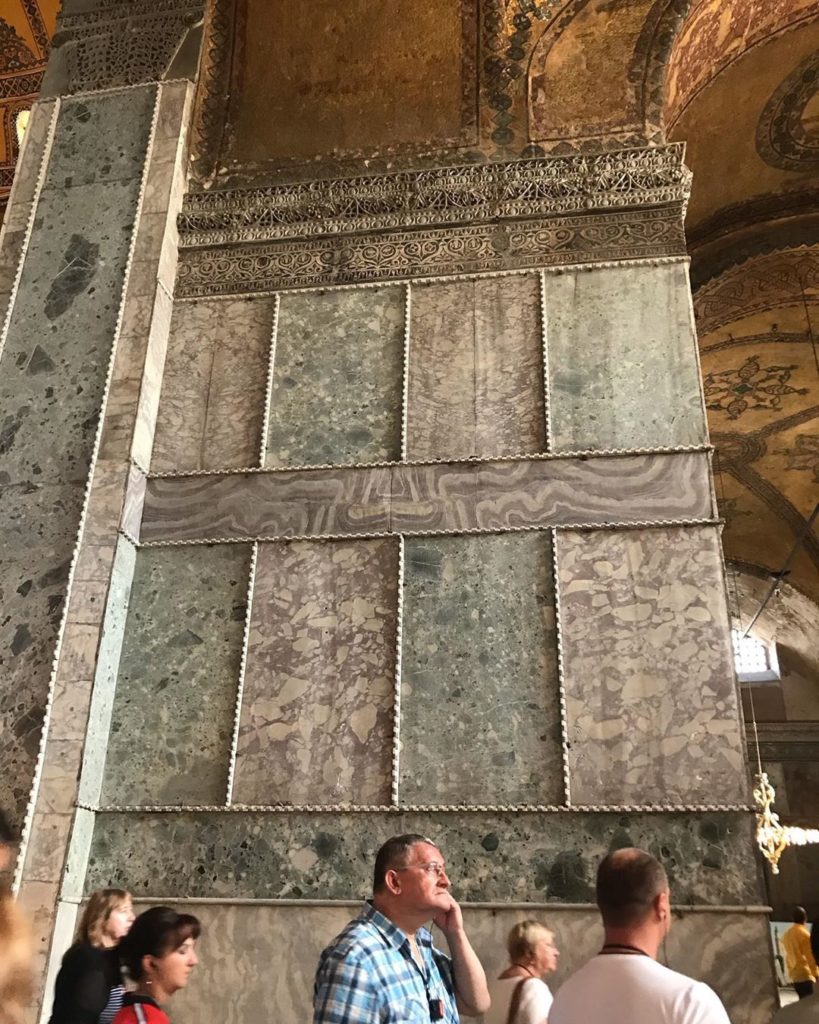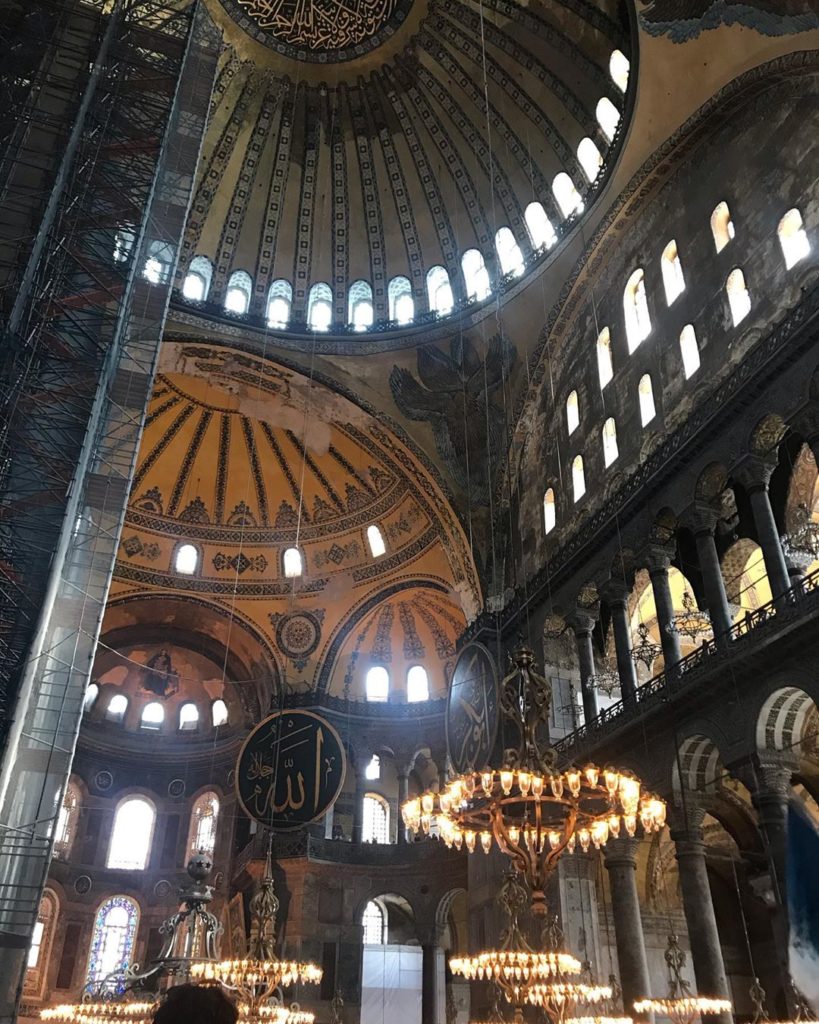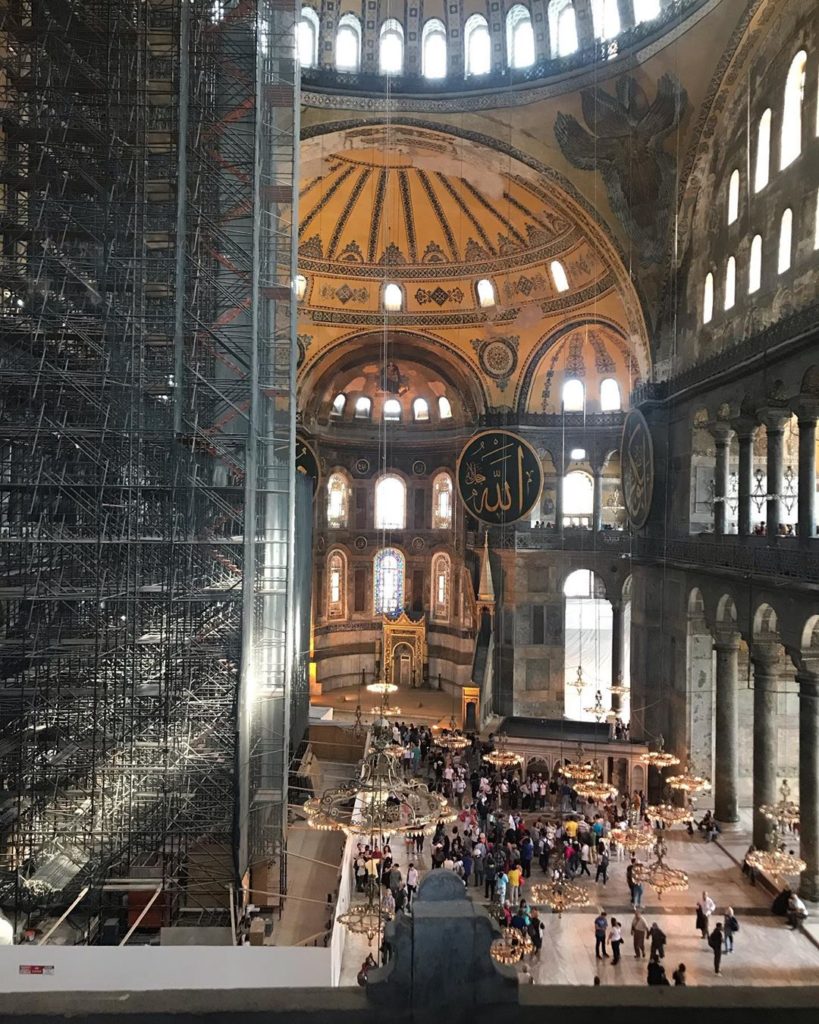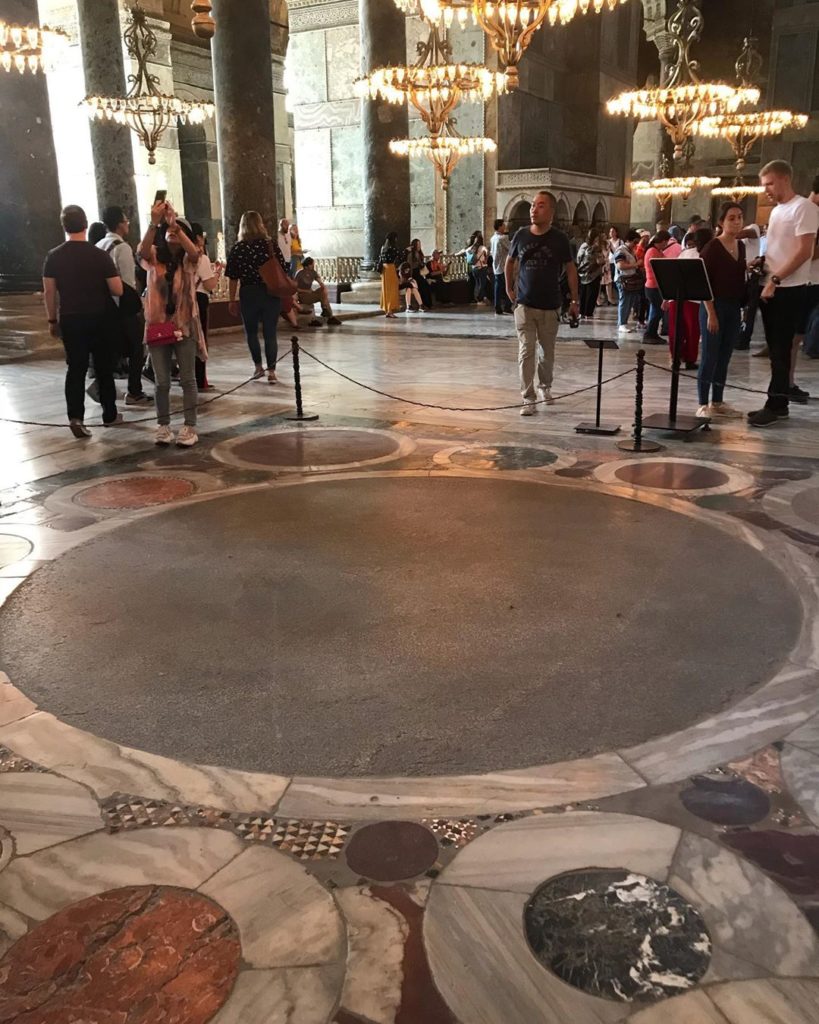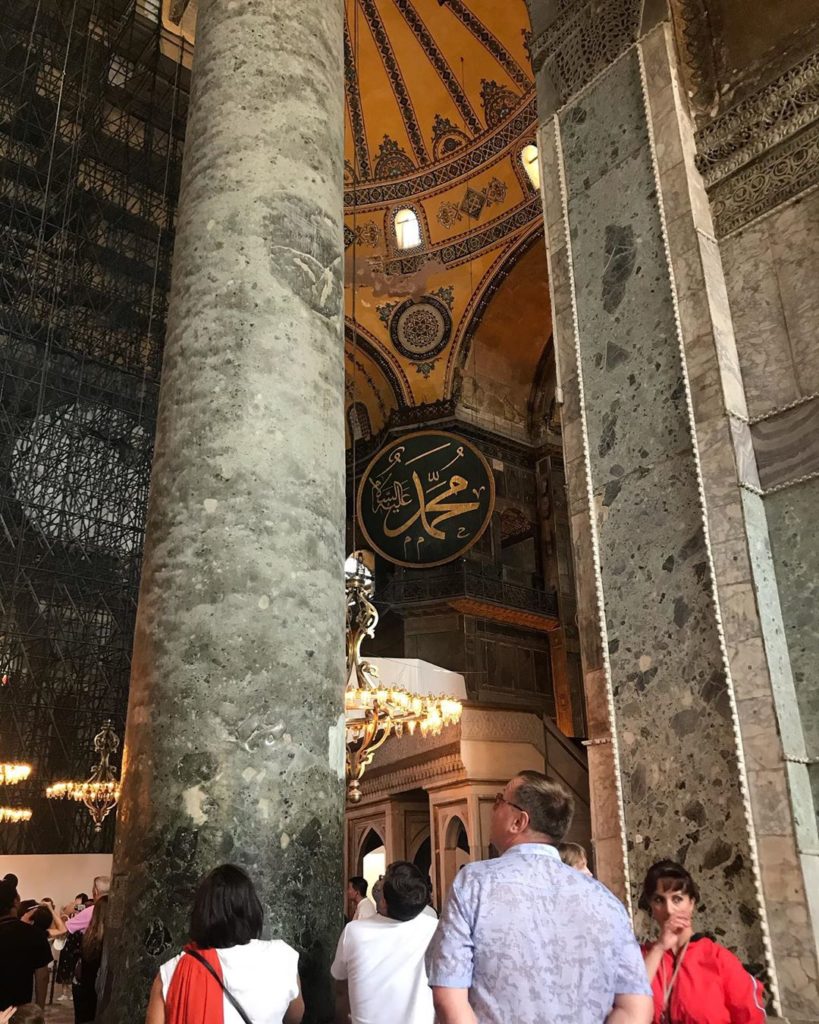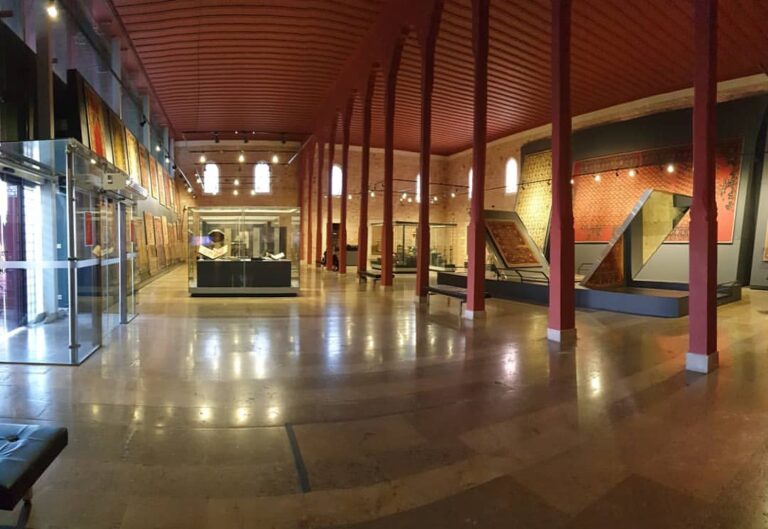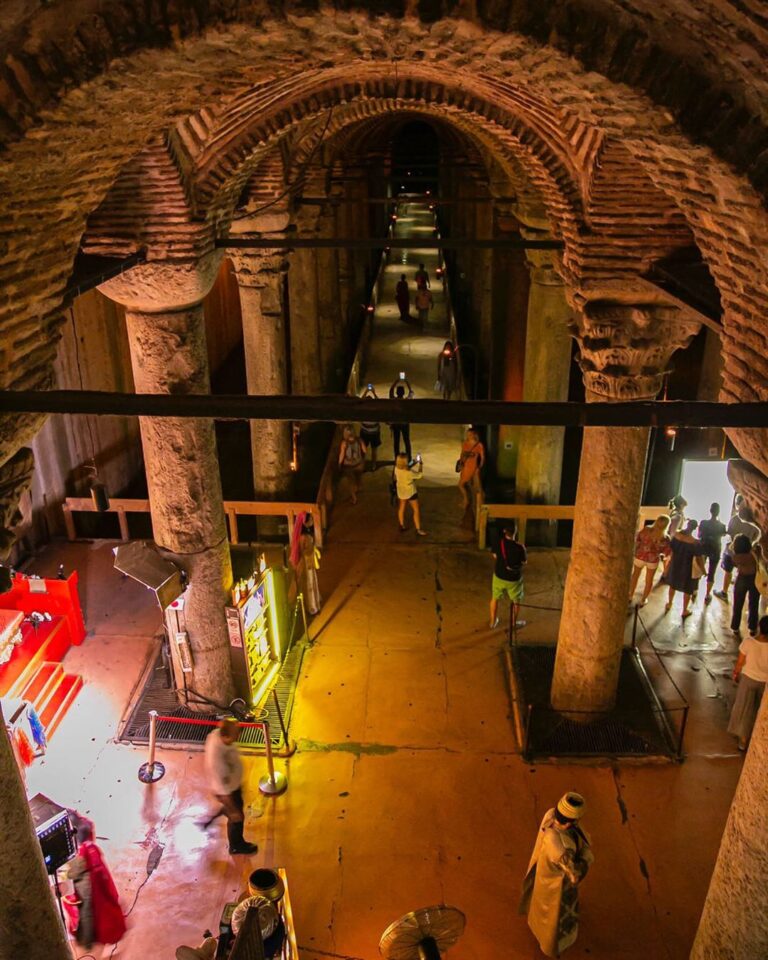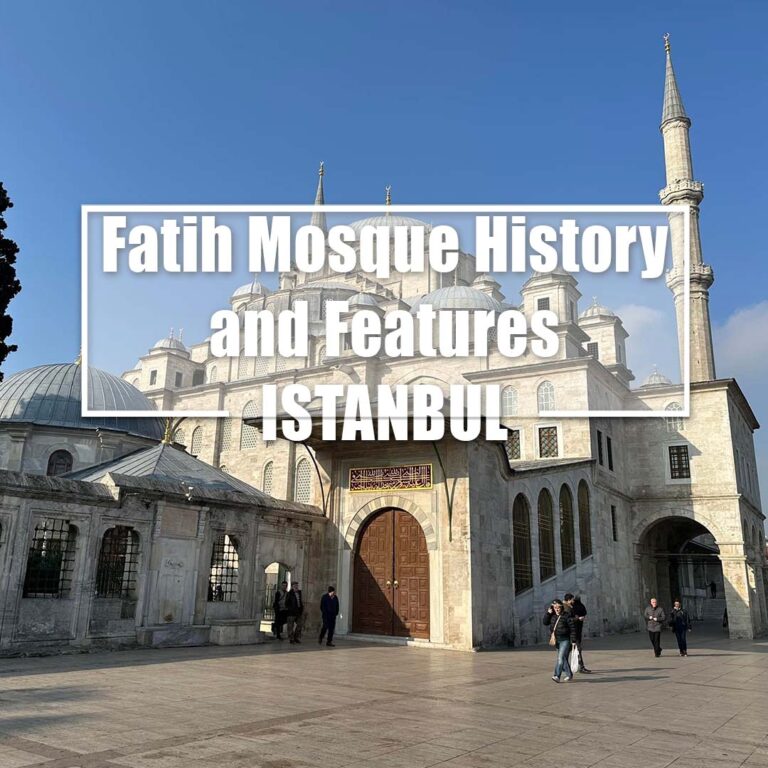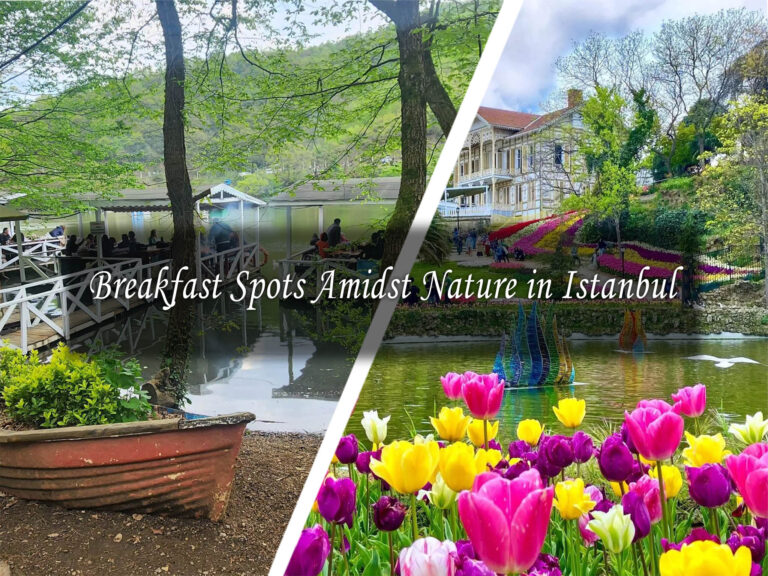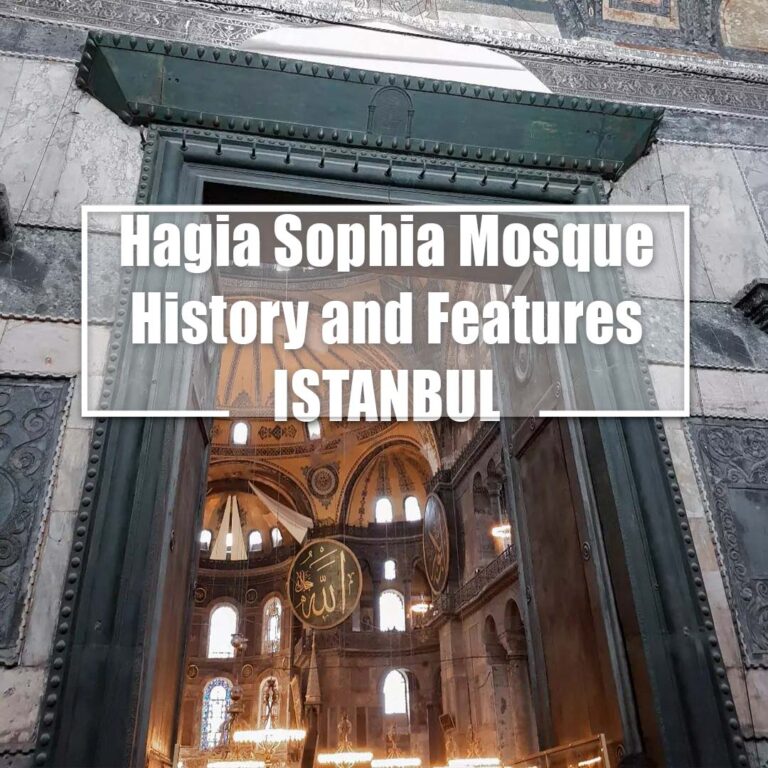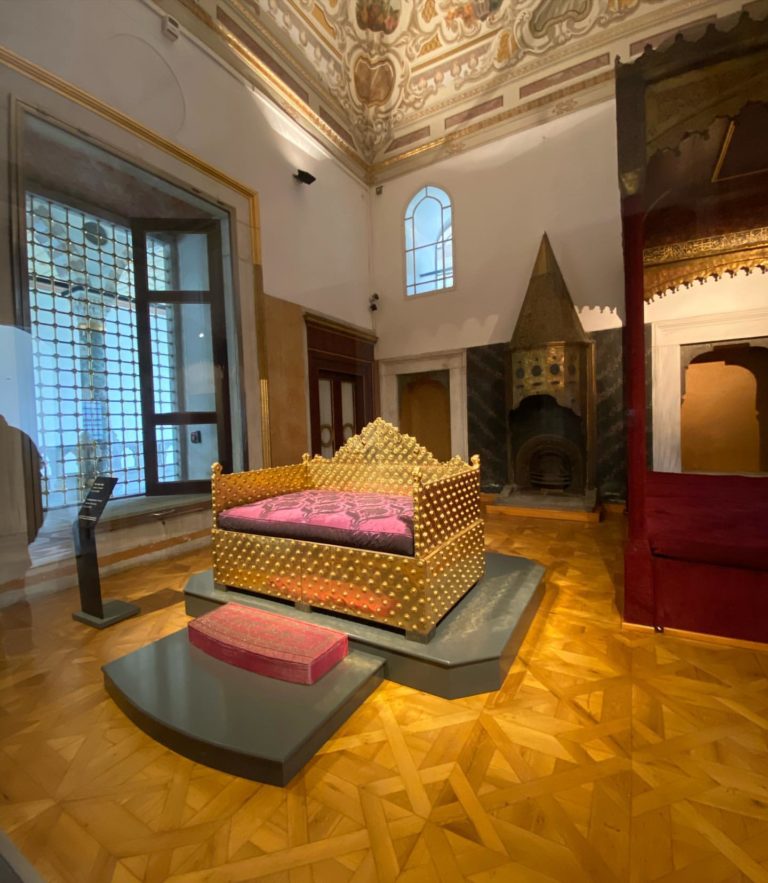Hagia Sophia Mosque (Where, Visiting Hours – Entrance Fee) – ISTANBUL
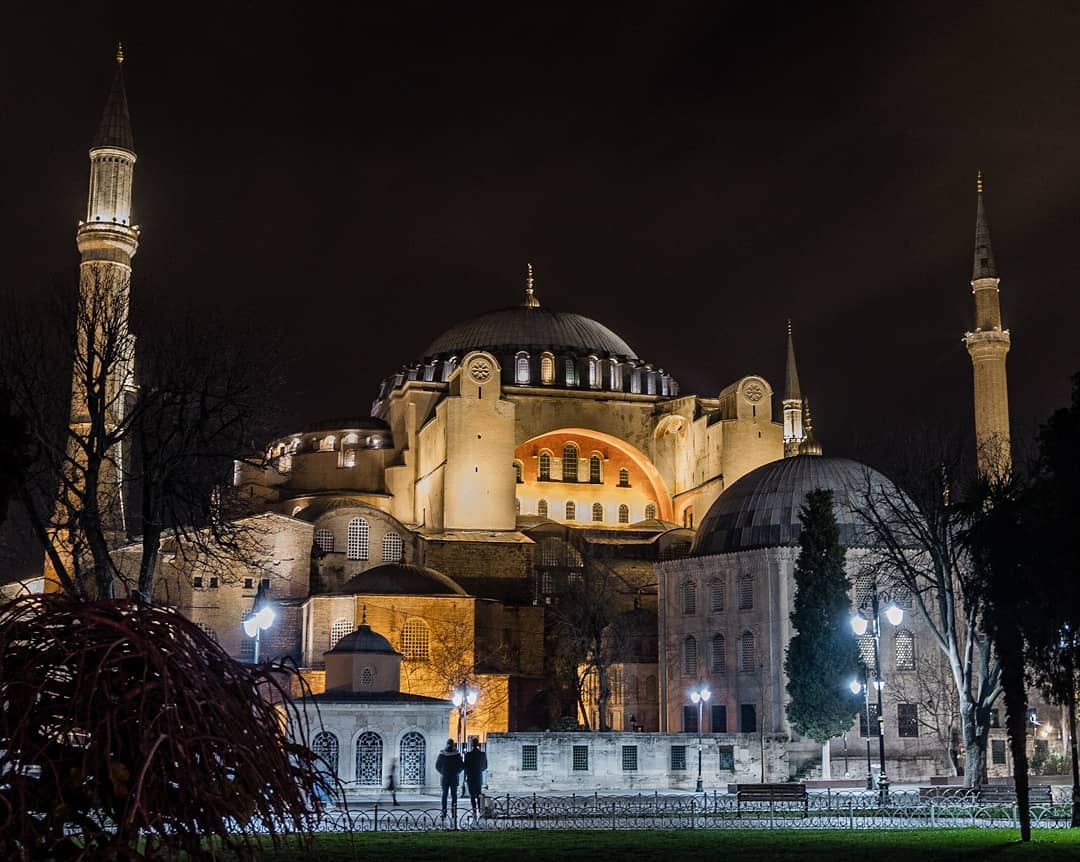
Everything about the Hagia Sophia Mosque, one of the most important monuments of the world’s architectural history, has survived to this day. Hagia Sophia Mosque, Historical, architectural structure, structures inside, decorations, where? and how to get there. All the curious as in our article.
Hagia Sophia Mosque History
Hagia Sophia, one of the most important monuments of the world’s architectural history that survived until today, is the largest church built by the Eastern Roman Empire in Istanbul and built three times in the same place. The Hagia Sophia, which is an important place for the art world in terms of its architectural structure, magnificence, size and functionality, was named as the Great Church (Megale Ekklesia) when it was first built and it was defined as “Hagia Sophia Kutsal which means Sacred Wisdom.
The 1st structure,We mentioned above that it was built three times. The first of these was built in 360 by Emperor Constantius, who served between 337-361. This church was burned down as a result of the popular uprising in 404. Although there are no remains of the first church, the stamps of Megale Ekklesia in the Mosque depot are thought to belong to this structure.
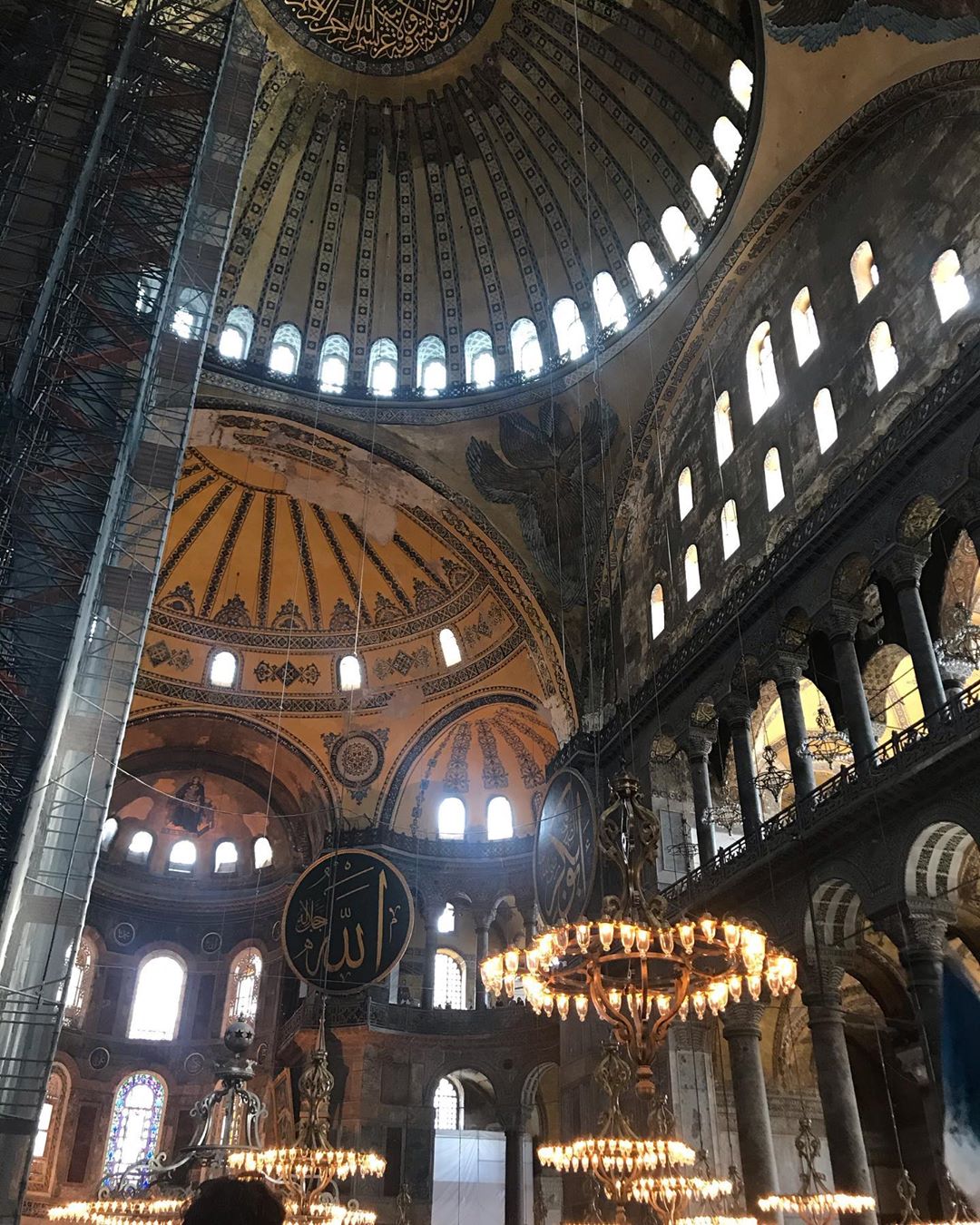
The 2nd structure, the Emperor II between 408-450. It was rebuilt in 415 by Theodosios. The church was demolished in the 5th year of the reign of Emperor Justinian, on 13 January 532 during the great popular uprising which was the result of the merger of the aristocratic blue and the green representing the tradesmen and merchants against the Empire.
The 3rd structure,Today’s Hagia Sophia was built by Emperor Justinianos who worked between 527-565 for Isidoros of Miletus (Miletus) and Anthemios of Tralles (Aydın). According to the historian Prokopios, the building, which started on 23 February 532, was completed in as little as 5 years and the church was opened for worship on 27 December 537.
During the 1st Crusade, Istanbul was occupied by the Latins between 1204 and 1261, during which time both the city and Hagia Sophia were looted. When the Eastern Roman city recaptured in 1261, it is known that Hagia Sophia was in a very ruined state.
Hagia Sophia was converted into a mosque in 1453 when Fatih Sultan Mehmed conquered Istanbul. Immediately after the conquest, the building was strengthened and preserved in the best way and continued as a mosque with the additions of the Ottoman Period. The structure was damaged by various earthquakes since the date it was built. The minarets built by Mimar Sinan also serve as supporting buttresses.
After a large number of small, large scale maintenance, repair and renovations, Mustafa Kemal Atatürk’s order and the Council of Ministers decided to convert the Mosque and on February 1, 1935 as a Mosque, opened to domestic and foreign visitors.
Architectural Structure
Emperor Justinianos sent news to all the states in his entourage to make Hagia Sophia more magnificent and flashy and ordered the most beautiful architectural pieces to be collected for use in Hagia Sophia. Columns and marbles used in the church; Aspendos, Ephesus, Baalbek, Tarsus, such as the ruins of ancient cities in Anatolia and Syria. White marbles in the structure were brought from Marmara Island, green somakis from Eğriboz Island, pink marbles from Afyon and yellow marbles from North Africa were used in Hagia Sophia. In addition, it is known that the columns brought from the Temple of Artemis at Ephesus were used in the naves and 8 porphyry columns brought from Egypt were used under half domes.
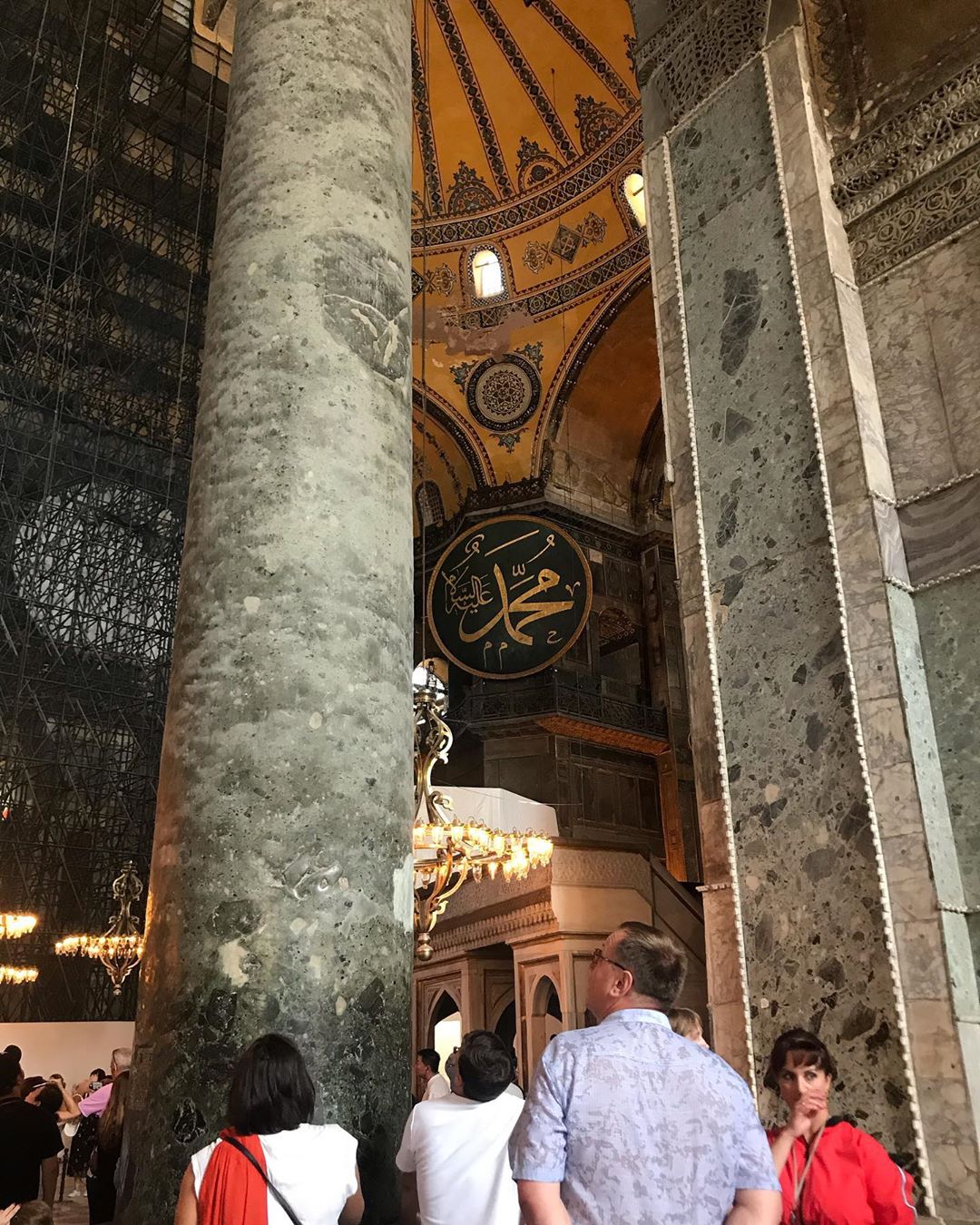
Immediately after the conquest of Istanbul, the building was strengthened and preserved in the best way and continued to exist as a mosque with the additions of the Ottoman Period. The structure was damaged by various earthquakes since the date it was built.
A madrasah was built in the north of the church during the reign of Sultan Mehmed the Conqueror. This madrasah was demolished during the reorganization works that were built during the reign of Sultan Abdulaziz between 1869-1870 and was rebuilt between 1873 and 1874. The ruins of the ruined Madrasah were unearthed in 1982 as a result of excavations.
During the Ottoman period, in the 16th and 17th centuries, mihrabs, pulpit, muezzin mahfiller, sermon pulpit and maxurs were added to the Hagia Sophia. During the reign of Sultan Abdülmecid, 8 calligraphy plates with a diameter of 7.5 meters written by calligrapher Kadıasker Mustafa İzzet Efendi were placed on the walls of the main room. “Allah, the Prophet. Muhammad, Hz. Abu Bakr, Hz. Omar, Hz. Osman, Hz. Ali, Hz. Hasan and Hz. Hüseyin ”is known as the largest calligraphy plates of the Islamic world. The same calligrapher wrote the 35th verse of Surat an-Nur in the middle of the dome.
Architectural Buildings
Altar: The mihrab, which constitutes a special section at the beginning of the traditional mosque architecture, is a high section relative to its environs, facing the Qibla direction in mosques, masjids and prayer, where the imam stands in front of the congregation. The mihrab, which is located in the southeast of the main place within the Hagia Sophia Mosque, was repaired and added by the Ottoman Sultans from time to time.
Pulpit: The pulpit is a high-rise staircase in mosques on Fridays, where the orator goes on and read sermons. The pulpit on the right side of the altar in Hagia Sophia, Sultan III. It was built during the Murad Period. The Ottoman period is one of the best examples of 16th century marble workmanship.
Hünkâr Mahfili: Hünkâr Mahfili is a special place for the sultans called Osmanlı Hünkâr Mahfili ”or“ Mahfil-i Hümayun inde in Ottoman architecture due to the fact that the sultans performed Friday and Bayram prayers at the night of Kandil in the city’s Selâtin mosques.
Müezzin Mahfili: Muezzin Mahfili is the section where the muezzin goes to the top during prayer and other prayers and prays and is aligned with the Qibla axis. In Hagia Sophia, III. During the Murad Period, a large Müezzin Mahfili was built to the east of the main place, and because the place was very large and the congregation was crowded, 4 more Müezzin Mahfili were added to the building.
Müezzin Mahfilleri, which is in harmony with the main structure, reflects the finest examples of 16th century Ottoman marble artwork.
The Omphalio: Omphalion, the place where the Emperors were crowned during the Eastern Roman Period, is a special section in which opus sectile decorations are made around the large marble circle of different colors and sizes and the parts where they combine.
Mahmud Library: One of the most important Ottoman additions in the structure was the library built between the two buttresses in the southern part of the building which was built by Sultan Mahmud I in 1739. This section consists of the reading room and the place where the books are stored and the corridor and stony that connect them, and is separated from the main space by a gilded bronze network of 6 columns. The bronze network is decorated with flowers and curved branches. There are two door handles on the two-winged door of the library with the inscription “Ya Fettah“
Maxures: Hagia Sophia was used not only as a religious structure but also as an educational center during the Ottoman period. Outside the prayer times, important religious and scientists of the period, here, the public was informed about religious and scientific issues. For this purpose, wooden sections named as maxure were built inside the building. There are a total of 11 maxures in Hagia Sophia.
Marble Cubes: The cubes made of two monolithic marbles on the side naves of the building belong to 330-30 BC and were brought from the ancient city of Pergamum. Sultan III. Murad brought to Hagia Sophia during the period and an average of 1250 liters of liquid from these cubes, mosques during the period, candles and feast prayer was distributed. On the other days there are taps in the lower parts of the cubes containing water.
Wish Column: There is a carved column in the center of the building covered with bronze plates called the sweat column or wish column. In some sources, it is stated that this column gained holiness among the people over time. It is rumored that during the Eastern Roman period, it helped people to heal; According to the legend, Emperor Justinianus, who had a severe headache in the building, leaned his head on this column and realized that headache had passed after a while. When this event was heard among the public, it was spread that the column had healing properties. Therefore, people believed that they would heal when they put their fingers into this cavity in the column and put their soaked fingers on the place where they felt the disease. In another legend, this wetness is said to be the tears of Mary.
Commander Henricus Dandolo’s Tombstone: On the ground opposite the mosaic of Deisis, IV. The tombstone of the Venetian Doju Commander Henricus Dandolo, who ruled the Crusade and died in Istanbul in 1205 at the age of 70, is found. No finds related to the grave were found during the researches.
Viking Article: In the middle of the southern gallery, on the marble balustrades, there is an inscription from the Vikings. In this article, which was determined to belong to the 9th century, the phrase “Halvdan was here” is written. It was thought to have been written by a Viking soldier who worked as a mercenary in the Eastern Roman period.
Emperor’s Gate: It is the largest gateway of Hagia Sophia that dates back to the 6th century. The Emperor’s gate, 7 meters tall, is made of oak wood with a bronze frame. The door, whose wings were covered with bronze plates, was used only by the Emperor and his nature. Eastern Roman sources indicate that the door could be made of wood of Noah’s Ark, as well as the chest of the ark where the Jewish holy plates were kept.
Beautiful Door: The bronze door to the 2nd century BC, located at the exit to the south of the inner narthex, is the oldest architectural element used as reused material in Hagia Sophia. The gate was decorated with floral and geometric patterns in relief form and was dismantled from an ancient pagan temple in Tarsus on 838 by Emperor Theophilos (829- 842) and brought here.
Marble Door: The southern gallery, where the patriarchate officials hold religious meetings, is separated from the western gallery by a marble door. The door gives the appearance of two separate doors when viewed from the western gallery and there are plant, fruit and fish motifs in the panels. It is said that one side of the marble gate represents heaven and the other side represents hell.
Primary School: Located in the southwest courtyard of Hagia Sophia, the Sıbyan School was built in 1740 by Sultan Mahmud I. The building, which was used as a school from its construction until the Mosque period, was later used as a Mosque lodging.
Fountain: Built by Sultan Mahmud I in 1740, the Hagia Sophia fountain is a masterpiece of Ottoman architecture and one of the largest and most beautiful fountains in Istanbul. It is covered with dome and eaves placed on eight marble columns and eight arches. On the top of the dome, there are engraved yazılmış Allah yazılmış carved in the form of a tulip in bronze and ”Muhammad olarak with a mirror on the bottom and“ Kaside ında on the top and inside of the marble portico.
Muvakkithane: The Hagia Sophia is one of the 29 traditions that have survived from the 38 muvakkithanas built for the public to learn the prayer times during the Ottoman period. It was built in 1853 by the Fossatti brothers, who repaired Hagia Sophia during the reign of Sultan Abdülmecid, and is one of the most beautiful and magnificent of its kind. The building is now used as a Mosque Office.
Sebiller: The dispenser, which is generally adjacent to the mosques, has a special architecture and distributes drinking water for charity without waiting, and there are two dispensers built for this purpose in Hagia Sophia.
Minarets: Immediately after the Hagia Sophia was converted into a mosque, a wooden minaret was built by Fatih Sultan Mehmed on one of the half domes. This minaret has not survived. When the brick minaret in the southeast is examined in terms of style, Fatih Sultan Mehmed or II. It can be dated to Bayezid Period. Bab-ı Humayun minaret, Edirne Selimiye Mosque minarets due to the similarity of the II. It may have been built by the architect Sinan during the Selim Period. The minarets in the southwest and northwest directions are Sultan III. It was built by Mimar Sinan during the reign of Murad. Height 60 m. The minarets, which have a massive body and solid lines, complete the main structure of Hagia Sophia. In the 15th, 16th and 19th centuries, the minarets were decorated with various decorations.
Mosaic and Calligraphy Decorations
All surfaces except the marble covered walls of Hagia Sophia are decorated with beautiful mosaics. Materials of gold, silver, glass, terracotta and colored stones were used in the construction of the mosaics. The vegetal and geometric mosaics in the structure date back to the 6th century, and the depicted mosaics date back to the period of Tasvir Refractiveness (730-842).
In addition, after the conquest of Istanbul by Fatih Sultan Mehmed served as a mosque in Hagia Sophia there are important calligraphy plates.
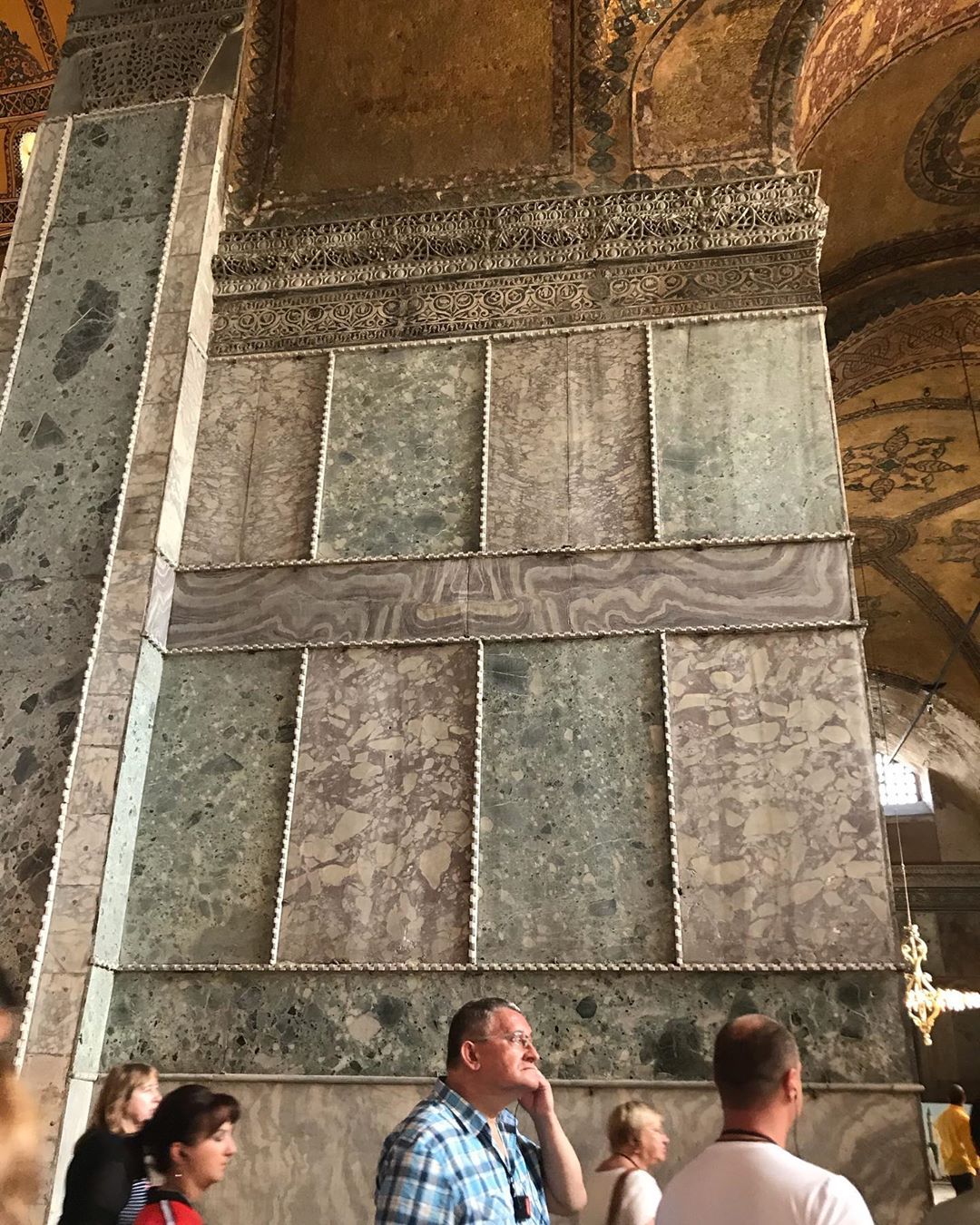
Large Line Plates
The large round calligraphy plates hanging on the walls of the main room were written by Kadıasker Mustafa İzzet Efendi, one of the most famous calligraphers of the period during the repairs made during the reign of Sultan Abdülmecid between 1847-1849. 7.5 m. diameter round calligraphy plates are written in gold gilding on a green background made of hemp. Allah (c.c), the Prophet. Muhammad (s.a.v), Four Caliphs; Hz. Abu Bakr, Hz. Omar, Hz. Osman, Hz. Ali and Hz. The descendants of Muhammad Hz. Hasan and Hz. The plates with the names of Hüseyin are 8 pieces. The wooden hangers of the boards are made of linden wood because they are light and durable. It is known that these calligraphy plates are one of the biggest calligraphy plates of Islamic World.
Line Plates in the Mihrab Section
In Hagia Sophia, there are calligraphic plates belonging to the Ottoman Sultans on the right wall of the mihrab. From top to bottom
1-calligraphy plate, Sultan II. Mahmoud (1808-1839)
2-calligraphy plate, Sultan II. Mahmoud (1808-1839)
3-calligraphy plate, Sultan III. Ahmed (1703-1730)
4-calligraphy plate, Sultan II. Mustafa (1695-1703)
5-calligraphy plate, Sultan II. Mustafa (1695-1703)
Written by. On the left wall of the mihrab, there are plates written by famous calligraphers of the period. The calligraphy plate on the left, Hattat Mehmed Esad Yesari The calligraphy plate on the right was written by Seyhülislam Hattat Veliyyüddin Efendi.
Leon Mosaic
Pantaktrator on the Emperor Gate depicts Jesus in the middle mosaic; Jesus is sitting on a backed throne, blessing with his right hand, and holding an open Bible with his left hand. On the Bible in Greek ”Peace be with you. I am the world’s light ”is written. Archangel Gabriel (Gabriel) in the medallion on the right side, Hz. Mary is depicted. At the foot of Jesus, he prostrated himself to the Eastern Roman Emperor VI.
Presentation Mosaic
On the Vestibül Gate to the south of the inner narthex, there is a presentation mosaic, one of the most important figured mosaics of Hagia Sophia. This mosaic was unearthed in 1849 by Fossati when the repairs in Hagia Sophia were about to end. The floor of this mosaic panel, which has a symmetrical layout, is again composed of gold leaf mosaics and on a throne without backrest in the middle. In the medallions on both sides of Mary and her head, there are abbreviated monograms of the words METER and THEOU, meaning ”Mother of God”
Apsis Mosaic
In the middle of the quarter dome of the apse, Mother of God Hz. Mary, (Theotokos), is sitting on a throne decorated with precious stones and cushions on her lap Children Hz. He is holding Jesus. This mosaic is important in terms of being the first figurative depiction example made in Hagia Sophia after the reflection period.
Two Angels in the Apsis
There is Gabriel (Gabriel) on the right of the apse arch and Michael (Mikhael) mosaic on the left. Today, only the wing tip and part of the foot of the Michael (Mikhael) depiction can be seen.
Angel Depictions in the Dome
On the pendants, four angel figures, which are not exactly identical to each other, are carved. These angels are Seraphim depictions of one head and six wings, which are believed to protect God’s throne in heaven. The angels in the east are made of mosaics, and the two angels in the west are broken and renewed as frescoes during the Eastern Roman Period.
The faces of the angelic figures in the pendants were covered with a star-shaped metallic cover during the Ottoman period. During the mosaic repairs on the dome in 2009, the cover covering the face of the angel portrait in the northeast was opened and the face of the angel was revealed.
Patriarch Mosaics in Tympanon
Only three of the patriarch figures made of mosaics in the half-arched niches on the tymphanon walls in the north of the structure have survived to the present day. In the first niche, Istanbul Patriarch Young Ignatios, in the fourth niche Istanbul Patriarch Aziz Ioannes Khrysostomos and in the sixth niche Antioch Patriarch Aziz Ignatios Theophoros. The mosaic fragments seen in the seventh niche are thought to belong to Athanasios.
Deisis Composition
On the western wall of the southern gallery, there is a mosaic panel with the Deisis scene, which is considered the beginning of the Renaissance in Eastern Roman Painting. In the description, Ioannes Prodromos (John the Baptist) on the right and Hz. Mary, and Pantakrator Jesus in the middle. In the Mosaic on the Day of Resurrection, the Prophet Muhammad for forgiveness of humanity. Mary and Hz. Yahya’s Prophet. They are depicted in Christ.
Mosaic of the Komnenos
Mosaic panel on the Emperor II. Ioannes Komnenos and his wife Eirene of Hungarian origin and their son II. Located in Alexios. In the middle of the composition in his lap Children Hz. Jesus standing with the Prophet. Mary is depicted. The inscription surrounding the head of the Emperor is inscribed with the phrase Por Porphyrogennetos Komnenos, the ruler of the Romans p (born in porphyry hall), a sign of nobility indicating that the Emperor was born during the reign of his father. Around the head of the Empress is August Religious Augusta Eirene ”.
Zoe Mosaic
Mosaic panel, Emperor IX. Konstantinos Monomakhos and Empress Zoe. On the head of the Emperor is written Kon Constantine Monomachos, the Faithful Ruler of the Romans, the Servant of Jesus Christ ”. On the head of the Empress is Zo Very Religious Agusta Zoe ”. This mosaic board symbolizes the donation of the emperor family for the restoration of Hagia Sophia.
Emperor Mosaic
On the southwestern part of the northern gallery is the mosaic of Emperor Alexandros. The mosaic panel was built in a secluded corner, not like the other mosaics in the structure. In the history of Eastern Rome, Alexandros, who is said to have a faint personality, was depicted prostrating on the door of the Emperor VI. Leon’s brother to whom he reigns. It is one of the most robust mosaics of Hagia Sophia in terms of its location.
Mosaics in Pastor Rooms
In the deisis composition, Hz. Jesus and the Prophet. The mosaics of Mary have survived to the present day; In addition, among the apostles among the mosaics with other figures and decoration motifs consisting of wide branch folds dating back to the 6th century; The mosaics, which are thought to be depictions of Peter, Andreas, Lukas, Simon Zeoletes, Ezekiel the Prophet, Helena, mother of Emperor Constantine I, have not survived to the present day.
Mosaic Monogram of Sultan Abdulmecid
On the wall to the right of the main entrance door of the external narthex, the Sultan of Sultan Abdulmecid’s Tugra is displayed. Tugra was built by the Italian Master N. Lanzoni, one of the original gilded mosaic grains of the Hagia Sophia, which had been poured during the repairs of the Fossati brothers in Hagia Sophia in 1847-1849. The tuğra, which was given by Fossati to Sultan Abdülmecid; It is decorated with green colored mosaics on a background of round gilded mosaic grains (tessera). The outer border of the mosaic tuğra is decorated with navy blue single row mosaic grains. The mosaic tuğra is very important in terms of reflecting the Ottoman Period in terms of design and Eastern Roman Period in terms of materials used.
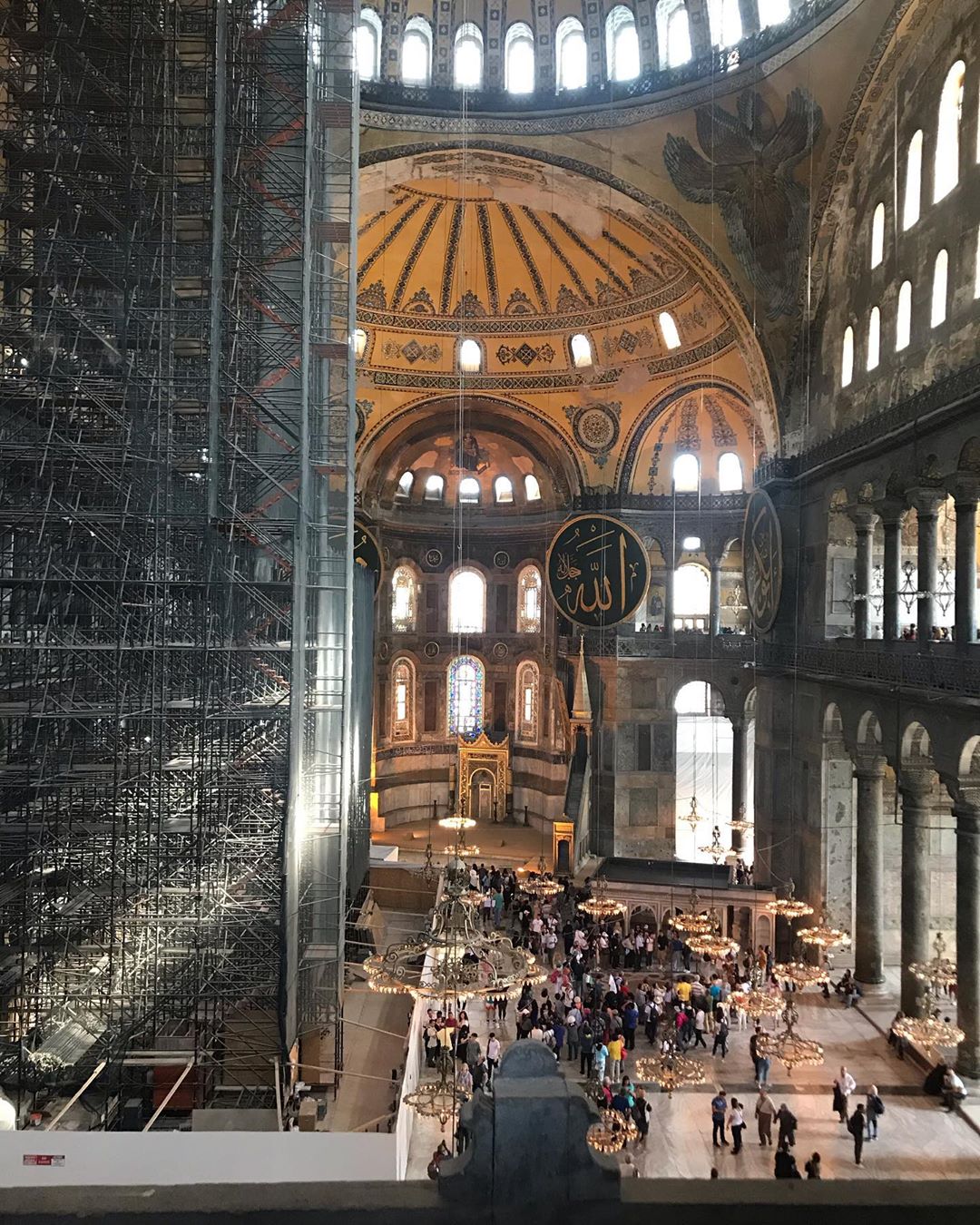
Hagia Sophia Mosque Visiting Hours
15 April / 25 October Summer Term
Box Office Summer Opening Time: 09:00 – Closing Time: 18:00
Summer Visit Opening Time: 09:00 – Closing Time: 19.00
24 October / 14 April Winter Term
Box Office Winter Opening Time: 09:00 – Closing Time: 14:00
Winter Visit Opening Time: 09:00 – Closing Time: 17:00
Please note that service is not available until 13:00 on the first day of religious holidays.
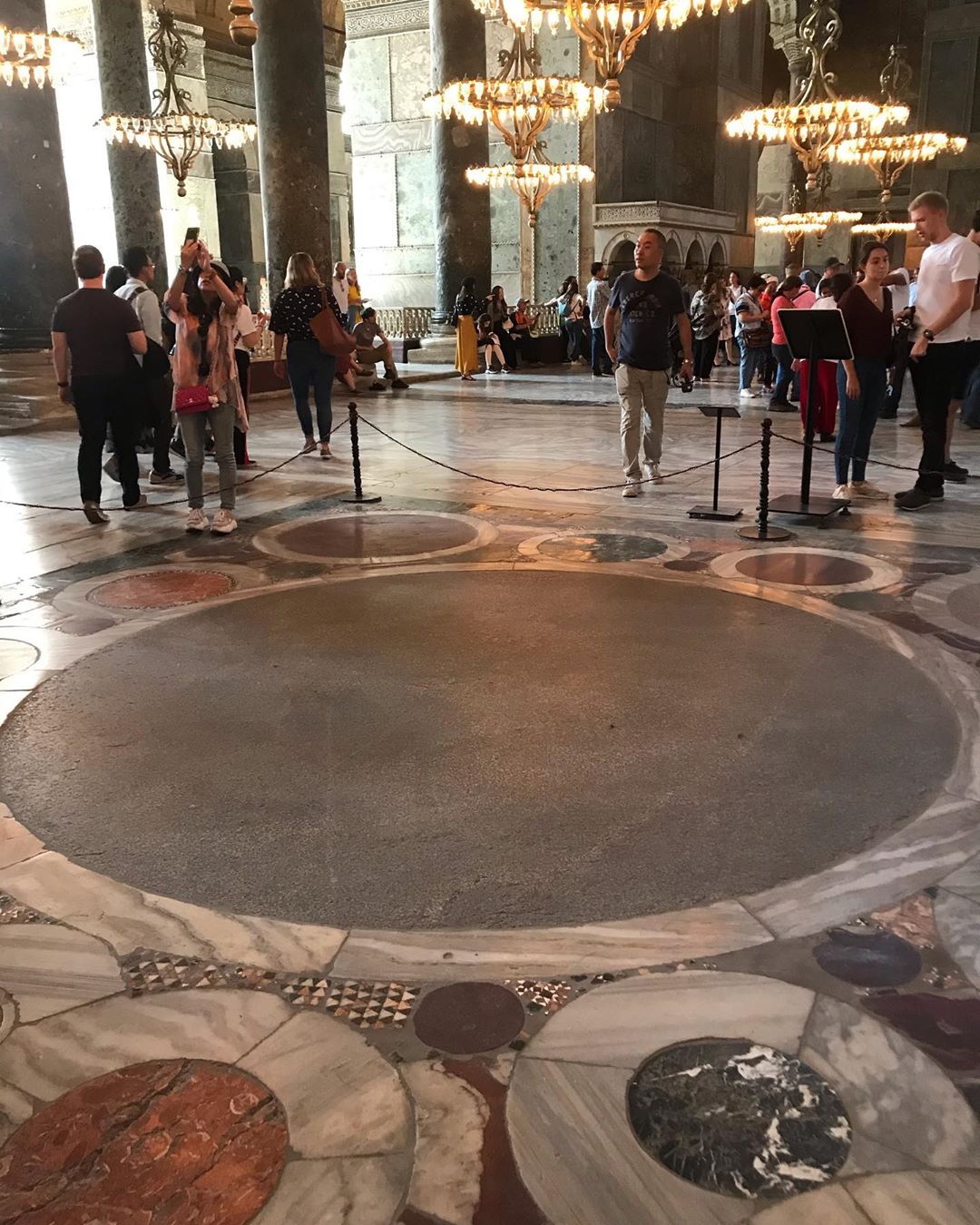
Hagia Sophia Mosque 2020 Entrance Fee
Per Person: 72 TL.
Persons who are citizens who are under the age of 18 and who are older than 65, disabled citizens and their accompanying persons can visit the Mosque free of charge.
With Muzekart + you can make unlimited visits throughout the year.
Where is Hagia Sophia Mosque? and How to get there?
Address: Sultan Ahmet Quarter, Hagia Sophia Square – Fatih / Istanbul
Transportation: You can reach the Hagia Sophia Mosque by all tram lines between Kabataş Beyazıt – Eminönü and Zeytinburnu directions and connected to these lines. You can go to Eminönü by sea from our districts such as Kadıköy and Üsküdar. Once you reach Eminönü, you can walk or take the tram. Those who will arrive by tram can get off at the stop of Sultanahmet or Gulhane Park. Click here for location information.
If you want to take a look at our list of places we have created for Fatih, let us take you as follows. 🙂

